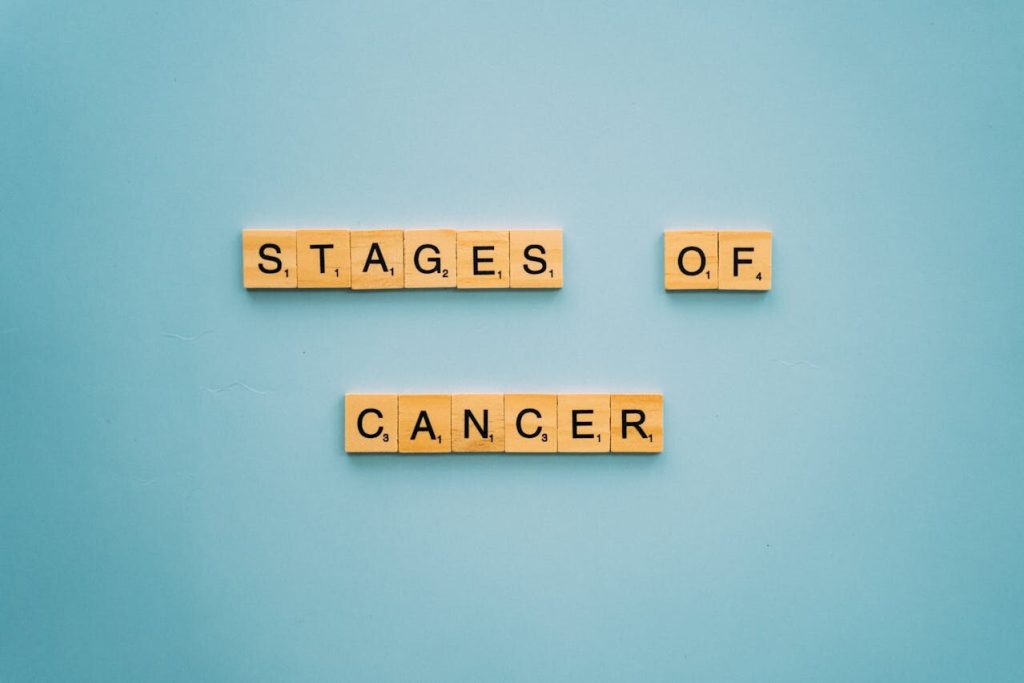Leukemia is a type of cancer that affects the blood and bone marrow, causing an abnormal increase in white blood cells. Along with other common symptoms, leukemia can also cause a purple rash on the skin that can be a sign of the disease. It is important to understand the symptoms and causes of leukemia purple rash to aid in early detection and effective treatment.
This article aims to provide comprehensive information on leukemia purple rash, including its symptoms, causes, identification, and available treatment options. Additionally, expert advice from medical professionals in the field of oncology will be provided, alongside holistic treatment modalities offered at the Cancer Center for Healing located in Irvine, CA.
Key Takeaways:
- Leukemia is a type of cancer that affects the blood and bone marrow.
- Leukemia can cause a purple rash on the skin, which can be an indication of the disease.
- Identifying and diagnosing leukemia purple rash is crucial for effective treatment.
- Treatment options for leukemia purple rash include conventional and alternative therapies.
- The Cancer Center for Healing offers a comprehensive approach to treating all types of cancer, including leukemia.
Understanding Leukemia Symptoms
Leukemia is a type of cancer that affects the blood and bone marrow, leading to the abnormal production of white blood cells. As the cancer progresses, these cells can spread throughout the body, leading to various symptoms.
Common symptoms of leukemia may include fatigue, weakness, weight loss, fever, night sweats, and frequent infections. However, the appearance of a purple rash is a specific symptom that can be associated with certain forms of leukemia.
Leukemia affects the body by disrupting the normal production of blood cells. The cancerous white blood cells may not function properly, and the body may not produce enough red blood cells or platelets. This can lead to anemia, bleeding, and an increased risk of infections.
Leukemia Rash Symptoms
The appearance of a leukemia rash can vary depending on the specific type of leukemia. However, a purple rash may be a sign of acute myeloid leukemia (AML) or acute lymphoblastic leukemia (ALL).
AML is a fast-growing leukemia that can cause purple patches on the skin, often on the arms, legs, and chest. These patches may be flat or raised, and they may be accompanied by other symptoms such as fever and fatigue.
ALL, on the other hand, is more common in children and can cause small red or purple spots on the skin. These spots can appear in clusters and may be accompanied by other symptoms such as swollen lymph nodes and bone pain.
If you notice a purple rash on your skin, it is important to seek medical advice to determine the underlying cause and receive appropriate treatment.
Identifying Leukemia Purple Rash
Leukemia purple rash is a common symptom among leukemia patients. It usually appears as small, reddish-purple dots on the skin, which may merge into larger patches over time. There are two main types of leukemia purple rash: petechiae and purpura.
| Type of Rash | Description | Visual Representation |
|---|---|---|
| Petechiae | Small, pinprick-sized dots that result from bleeding under the skin. |  |
| Purpura | Larger, flat patches of discoloration caused by bleeding under the skin. |  |
It’s important to note that leukemia purple rash can also be a symptom of other conditions, such as thrombocytopenia or certain infections. Therefore, a proper diagnosis from a healthcare professional is necessary to identify the underlying cause.
If you suspect that you or a loved one has a leukemia purple rash, it’s essential to seek medical attention immediately. Early detection and treatment can help improve outcomes and increase the chances of successful recovery.
Causes of Leukemia Purple Rash
Leukemia is a type of cancer that affects the blood and bone marrow. It develops when white blood cells divide abnormally, crowding out healthy blood cells and impairing the body’s ability to fight infection.
One known symptom of leukemia is a purple rash that appears on the skin. This rash, known as leukemia cutis or leukemia skin infiltration, is caused by the infiltration of leukemia cells into the skin tissue.
The exact cause of leukemia purple rash is not fully understood, but it is believed to be a result of the abnormal production and accumulation of white blood cells. When these cells infiltrate the skin tissue, they cause a reaction that leads to the characteristic purple rash.
Leukemia purple rash may also be associated with other factors, such as genetic mutations, exposure to radiation or certain chemicals, and a weakened immune system. However, more research is needed to fully understand the underlying causes of this symptom.
Expert Advice on Leukemia Purple Rash
It is crucial to seek medical advice if you experience any symptoms of leukemia, including the purple rash. According to Dr. John M. Bennett, a hematologist-oncologist and the director of the Leukemia & Lymphoma Society’s Bennett Research Laboratory, the appearance of a rash is often an indication of more advanced stages of leukemia.
He advises that patients with a history of leukemia or those experiencing symptoms such as fatigue, fever, or unexplained weight loss should seek immediate medical attention. A blood test can be performed to confirm the diagnosis, and further tests may be necessary to identify the specific type of leukemia.
One of the key aspects of treatment for leukemia is determining the appropriate therapy for each individual patient. According to Dr. Bennett, “a patient must be evaluated and treatment should be individualized based on their age, overall health, and the type of leukemia.”
Leukemia Treatment at the Cancer Center for Healing
The Cancer Center for Healing, under the leadership of Dr. Leigh Erin Connealy, offers a holistic approach to cancer treatment, including leukemia. Dr. Connealy emphasizes the importance of addressing the root cause of the disease, not just the symptoms.
She works with a multidisciplinary team of experts to develop personalized treatment plans that include a combination of conventional therapies such as chemotherapy and radiation, as well as alternative and complementary therapies.
“We focus on healing the whole person, not just the cancer,” says Dr. Connealy. “Our goal is to provide comprehensive care that addresses the physical, emotional, and spiritual needs of our patients.”
Holistic Treatment Modalities at the Cancer Center for Healing
The Cancer Center for Healing, located in Irvine, California, offers a holistic approach to treating leukemia. Dr. Leigh Erin Connealy, the founder and medical director of the center, is a renowned expert in integrative medicine and cancer treatment.
At the Cancer Center for Healing, patients receive comprehensive care that addresses the physical, emotional, and spiritual aspects of cancer. The center’s philosophy emphasizes the importance of empowering patients to take an active role in their healing journey.
| Treatment Modalities | Description |
|---|---|
| IV Nutrient Therapy | This therapy involves administering high doses of vitamins, minerals, and other nutrients intravenously to support immune function and promote healing. |
| Mind-Body Medicine | This approach recognizes the connection between the mind and body, and incorporates techniques such as meditation, yoga, and counseling to reduce stress and promote relaxation. |
| Ozone Therapy | Ozone therapy involves the administration of ozone gas to stimulate the immune system and improve circulation. |
| Naturopathic Medicine | Naturopathic medicine utilizes natural remedies, such as herbal supplements and dietary changes, to support the body’s healing processes. |
Through its specialized programs, the Cancer Center for Healing offers tailored treatment options for leukemia patients. These programs may include:
- Detoxification Programs
- Nutrition and Lifestyle Coaching
- Cancer Survivorship Programs
At the Cancer Center for Healing, the focus is on treating the whole person, not just the disease. This comprehensive approach to cancer care has helped many patients achieve optimal health and well-being.
Comprehensive Approach to Cancer Care
The Cancer Center for Healing takes a comprehensive approach to cancer care, addressing the physical, emotional, and spiritual aspects of treatment. At the center, a multidisciplinary team of experts works together to develop customized treatment plans that incorporate traditional and holistic therapies.
Dr. Leigh Erin Connealy, a renowned figure in the field of cancer treatment, leads the team at the Cancer Center for Healing. She believes that cancer care should focus not only on treating the disease but also on promoting overall health and wellness.
The center offers a range of treatment modalities, including chemotherapy, radiation therapy, immunotherapy, and targeted therapies. Additionally, patients can access alternative and complementary therapies such as acupuncture, massage therapy, and nutritional counseling to support their healing journey.
Diagnosis of Leukemia Purple Rash
Diagnosing leukemia purple rash involves a combination of physical examination, medical history, and laboratory tests.
The first step in the diagnostic process is to conduct a physical examination to assess the patient’s overall health and look for any visible signs of rash or skin discoloration. The doctor will also ask about any symptoms the patient may be experiencing, such as fever, fatigue, weight loss, or night sweats.
After conducting the physical exam, the doctor may order blood tests to check for abnormal levels of white blood cells and other markers that are indicative of leukemia. A bone marrow biopsy may also be necessary to confirm the diagnosis and determine the specific type of leukemia.
It is important to seek medical advice if experiencing any symptoms or noticing a persistent rash as early diagnosis and prompt treatment greatly improves prognosis and recovery.
Treatment Options for Leukemia Purple Rash
The treatment options for leukemia purple rash may depend on various factors, such as the type and stage of leukemia, the severity of the rash, and the patient’s overall health. Conventional treatments may include chemotherapy, radiation therapy, and targeted therapy, which aim to destroy cancer cells and prevent their growth.
Alternative or complementary therapies may also be utilized to manage symptoms and improve the patient’s quality of life. At the Cancer Center for Healing, Dr. Leigh Erin Connealy and her team of experts offer a comprehensive approach to cancer care that incorporates various holistic modalities.
| Treatment Option | Description |
|---|---|
| Chemotherapy | A treatment that uses drugs to kill cancer cells. It may be administered orally or intravenously depending on the type of leukemia. |
| Radiation therapy | A treatment that uses high-energy radiation to kill cancer cells. It may be targeted to specific areas of the body affected by leukemia. |
| Targeted therapy | A treatment that uses drugs to target specific molecules or proteins that contribute to the growth of cancer cells. It may be used in combination with other treatments. |
| Naturopathic medicine | A form of alternative medicine that utilizes natural remedies and therapies to support the body’s natural healing mechanisms. |
| Acupuncture | A complementary therapy that involves the insertion of thin needles into specific points on the body to stimulate energy flow and promote healing. |
| Meditation and mindfulness | Techniques that promote relaxation and reduce stress, often used to help manage symptoms such as pain, anxiety, and depression. |
It is important to discuss all treatment options with a healthcare professional and weigh the benefits and risks of each approach.
Specialized Programs at the Cancer Center for Healing
The Cancer Center for Healing offers specialized programs for leukemia patients, designed to address their specific needs and promote optimal healing. These programs may include:
- The Detoxification Program
- The Immune Enhancement Program
- The Cancer Prevention and Wellness Program
- The Hyperbaric Oxygen Therapy Program
Each program utilizes a combination of treatments and therapies tailored to the individual patient, based on their medical history, current condition, and goals for treatment.
Patient Testimonials and Success Stories
Real-life stories and testimonials from leukemia patients who have experienced a purple rash can offer valuable insights and hope to those going through a similar experience. Here are a few examples:
“I was worried when I started noticing a purple rash on my skin, but I never imagined it was related to leukemia. Thanks to my doctor’s prompt diagnosis, I was able to start treatment early and overcome my cancer. It was a tough journey, but I feel stronger than ever.”
– Sarah, 37, leukemia survivor
“When I saw the purple spots, I knew something was wrong. I was scared, but my doctor was very supportive and made me feel at ease. At the Cancer Center for Healing, I found a whole team of professionals who truly cared about my wellbeing and helped me heal holistically. I am grateful for their guidance and support.”
– David, 43, leukemia survivor
These are just a few examples of the many stories of resilience and triumph over leukemia purple rash. Seeking professional advice early on and exploring different treatment options can make all the difference in a patient’s journey towards recovery.
Future Developments and Research
Research plays a crucial role in understanding and treating leukemia purple rash. Ongoing studies and advancements provide hope for improved outcomes and quality of life for patients.
One area of research is focused on personalized medicine, which involves tailoring treatment based on an individual’s genetics and other factors. This approach aims to minimize side effects while maximizing effectiveness.
Another promising avenue is immunotherapy, which uses the body’s immune system to target cancer cells. This treatment has shown promising results in some leukemia patients, and ongoing research is exploring ways to optimize its effectiveness.
Advancements in technology, including precision medicine and molecular profiling, are also contributing to the understanding and treatment of leukemia purple rash. These tools enable doctors and researchers to better understand the underlying causes and mechanisms of the disease.
Overall, continued research and development offer hope for better outcomes and quality of life for patients with leukemia purple rash. As new treatments and therapies become available, it is important to stay informed and consult with healthcare professionals to determine the best course of action.
Conclusion
Leukemia purple rash is an uncommon symptom of leukemia that can be easily overlooked. It is important to be aware of the various symptoms of leukemia, including the purple rash, as early detection can significantly improve outcomes for patients.
Diagnosis and treatment should be done by healthcare professionals who specialize in leukemia and are familiar with the latest advancements in conventional and alternative therapies.
The Cancer Center for Healing, under the leadership of Dr. Leigh Erin Connealy, offers a holistic approach to treating leukemia and other types of cancer. Its comprehensive care focuses on healing the body, mind, and spirit, as well as integrating different treatment modalities for the best possible outcomes.
Research on leukemia purple rash is ongoing, and new therapies and treatments may become available in the future. For now, seeking professional medical advice and taking proactive steps towards improving health and wellbeing is crucial for managing leukemia and its associated symptoms.
FAQ
Q: What are the symptoms of leukemia?
A: Leukemia can cause a range of symptoms, including fatigue, pale skin, frequent infections, easy bleeding or bruising, bone pain, swollen lymph nodes, and, in some cases, a purple rash.
Q: How can leukemia purple rash be identified?
A: Leukemia purple rash is characterized by small purple spots or patches on the skin. It can appear on different parts of the body and may be accompanied by other symptoms of leukemia. It is important to consult with a healthcare professional for an accurate diagnosis.
Q: What are the causes of leukemia purple rash?
A: The exact cause of leukemia purple rash is not fully understood. It is believed to be related to the abnormal growth of blood cells in leukemia. Genetic factors, exposure to certain chemicals or radiation, and a weakened immune system may contribute to its development.
Q: What should I do if I suspect I have leukemia purple rash?
A: If you suspect you have leukemia purple rash, it is important to seek medical advice from a healthcare professional. They can perform diagnostic tests and provide appropriate treatment options based on your individual condition.
Q: What treatment options are available for leukemia purple rash?
A: Treatment options for leukemia purple rash may include chemotherapy, radiation therapy, targeted therapy, immunotherapy, or stem cell transplantation. Additionally, holistic treatment modalities offered at the Cancer Center for Healing, such as nutritional therapy, acupuncture, and mind-body techniques, may be utilized to support overall well-being.
Q: Are there any success stories of leukemia patients overcoming the purple rash?
A: Yes, there are many success stories of leukemia patients who have successfully overcome the purple rash and achieved remission. These patient testimonials offer hope and inspiration to others going through a similar experience.
Q: What is the Cancer Center for Healing’s approach to treating leukemia?
A: The Cancer Center for Healing, led by Dr. Leigh Erin Connealy, takes a holistic approach to treating leukemia. They focus on addressing the physical, emotional, and spiritual aspects of cancer care, offering a comprehensive range of therapies and specialized programs tailored to each patient’s needs.
Q: Is ongoing research being conducted on leukemia purple rash?
A: Yes, ongoing research and developments are being made to better understand and treat leukemia purple rash. New therapies, clinical trials, and studies are being conducted to improve outcomes for leukemia patients and advance our knowledge in this area.






